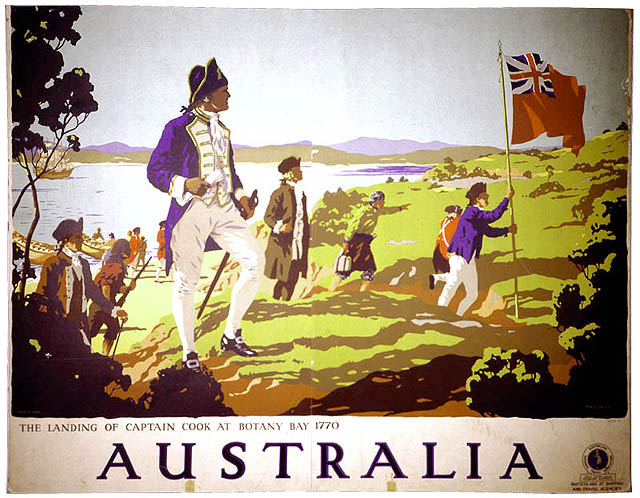So, we’ve come to the land down under. It’s the land of
kangaroos, koalas, wombats, Tasmanian devils, dingos, emus, and the
outback. It's the land of Steve Irwin, the didgeridoo, "G'day, mate!" and shrimp on the barbie. It’s one of the world’s
largest islands, located in the South Pacific (also called Oceanea). Australian culture is a fusion of many different cultures, as diverse and unique as it’s
flora and fauna.
The island itself is just slightly smaller than the
contiguous United States. The vast majority of the people live on the southern
and eastern coast. Much of the
western and northern parts consist of the Outback: a desert-like, sparse, arid
area, an area of much tourism and mining.
There are still some Aboriginal (the original people to live on the
island) communities in the Outback as well as other towns and cities, where
because of the sparseness and distance between these communities, school is
taught over the radio. This area is home to the famed Ayres Rock, also called “Uluru”
by the local indigenous people. Australia in recent years has dealt with many
severe droughts and damages from wildfires.
Outside of the Outback, the other major ecotourism hotspot
is the Great Barrier Reef, located off of the northeastern coast. It’s one of the world’s largest coral
reefs (which is actually a living being, not a rock like it looks like). It’s
also home to many fish and sea life that depend on it. Climate change,
pollution, and fishing are threats to the area, as well as certain other
animals and sea life that loom over this delicate environment.
Australia was officially claimed as a British colony by
Captain Cook, even though the Dutch were actually the first Europeans there.
The British turned the island into a penal colony, where they sent prisoners to
do manual labor under extremely harsh conditions as punishment. Many died of
hunger or disease, some were shot trying to escape, and some just died from
having a life sentence.
While most of the people there are of English and Irish
descent and speak English, there is no official language in Australia. The word Australia itself comes from the
Latin word for “southern.”
To the chagrin of many Americans, the capital isn’t Sydney
or Melbourne. It’s Canberra, a
city with a population of around 358,000 – roughly a little smaller than
Arlington, Texas. Ironically, the
area chosen for the capital city was strategically located between Sydney and
Melbourne, the two largest cities, and is unusual in the fact that it’s a
planned city (like Brazil’s capital city, Brasilia). The name Canberra is often contributed to being from one of
the local indigenous languages, Kambera, meaning “meeting place.” An
appropriate name for the center of government, I think. An alternate version is
that it was derived from the Anglicized form of the local word “nganbira” (or
“nganbra”) which roughly means a woman’s cleavage (worded better as the “hollow
between a woman’s breasts”). It was actually referring to the fact that the
city was placed in the flood plane between two nearby mountains. I don’t think
I’ll ever think of the city the same now.
But the country on a whole is fairly developed, with access
to clean water and sanitation, even in the rural areas. Literacy rates are at
around 99%. Australians will also be happy to know that they also have the 9th
longest average life expectancy, averaging at almost 82 years. (Side note:
they’ve updated these stats for 2012 figures, and earlier, I think I had noted
that Andorra was at 4th, but now it’s at 6th.)
Because of Australia’s history and ties to the U.K. and its
proximity to Asia, its culture is a blend of all of these cultures. You’ll find
this British-Asian traditions seeping into all aspects of its culture, from the
arts to its cuisine. It’s as diverse as countries like the United States, the
U.K., or Brazil. And I think I’m gonna have fun with it this week.
Up next: Holidays and Celebrations
Resources:
Wikipedia: “Australia” “Canberra” “List of US cities by
population” “Great Barrier Reef” “Outback”
CIA World Factbook: Australia
Y-Axis Australia Blog





No comments:
Post a Comment